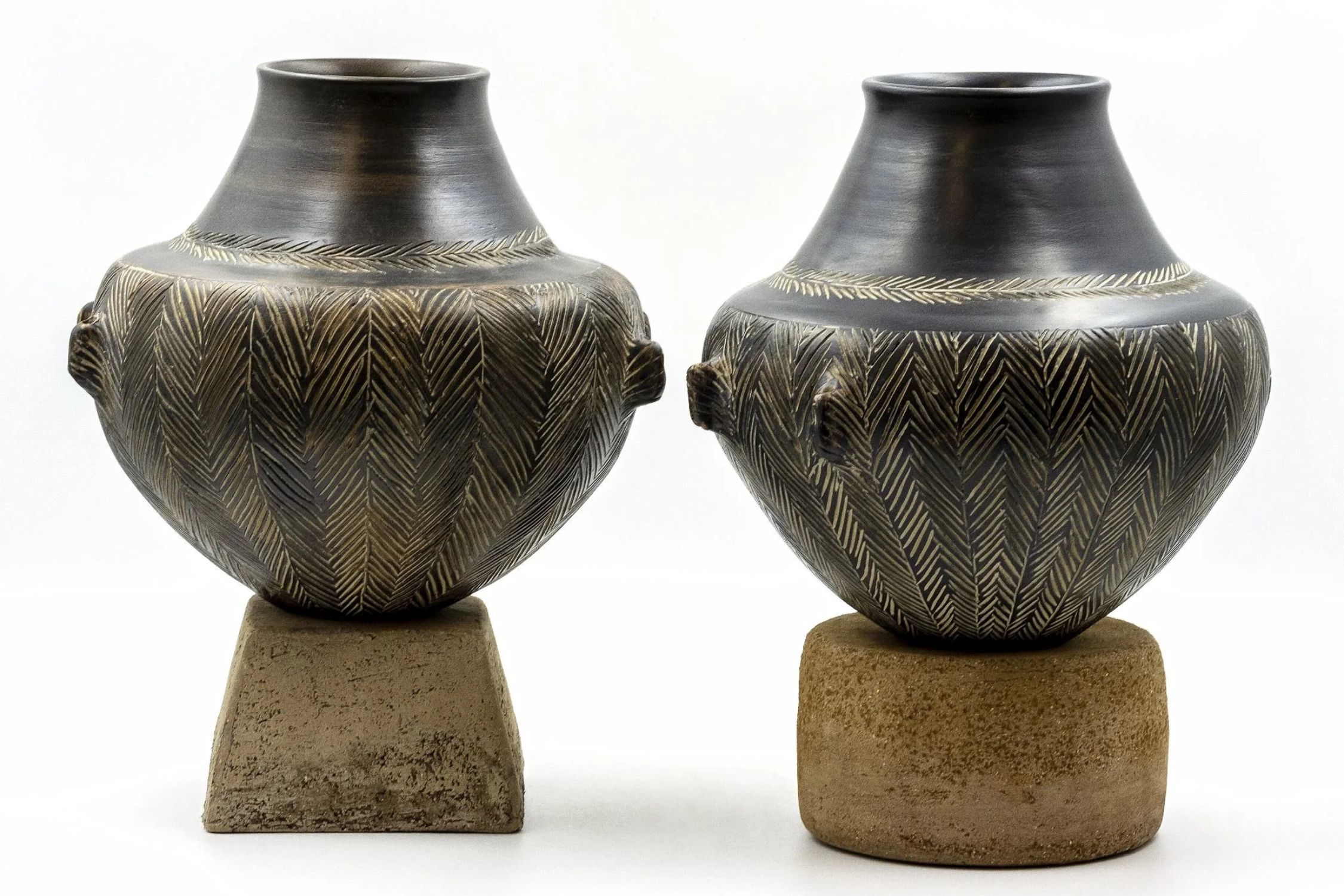
Greek painted vases reveal the art, stories, and culture of ancient Greece explored in this blog.
Key Highlights
- The development of Greek pottery evolved from early prehistoric designs to the sophisticated styles of the Classical and Hellenistic periods.
- Several distinct types of ancient Greek vases, such as amphoras, kraters, and kylixes, were crafted to serve functional and decorative purposes.
- Advanced production techniques, including the expert selection of clay, intricate painting, and kiln firing processes, were central to their creation.
- Renowned black-figure and red-figure vase painting styles became hallmarks of ancient Greek art and are among the most studied examples of Greek painted vases.
- Modern scholars rediscovered Greek pots, revolutionizing our understanding of ancient Greek culture and their influence on later civilizations.
- Decorative motifs on vases captured key aspects like mythological narratives, everyday scenes, and elegant geometric patterns.
The skill shown in Greek pottery shows the skill and beauty of ancient Greece. These pieces are a big part of Greek art. They are made to be both useful and nice to look at. Pictures on these pots tell stories about gods, people, and everyday life. This lets us see what life was like and what people believed back then. You can find many different pottery styles, like black-figure and red-figure painting, which are some of the most well-known examples of Greek painted vases. Their careful work has helped to keep the feeling of old Greece alive for all of us today. People still know Greek pottery for its detailed design and stories that show us the world of the past.
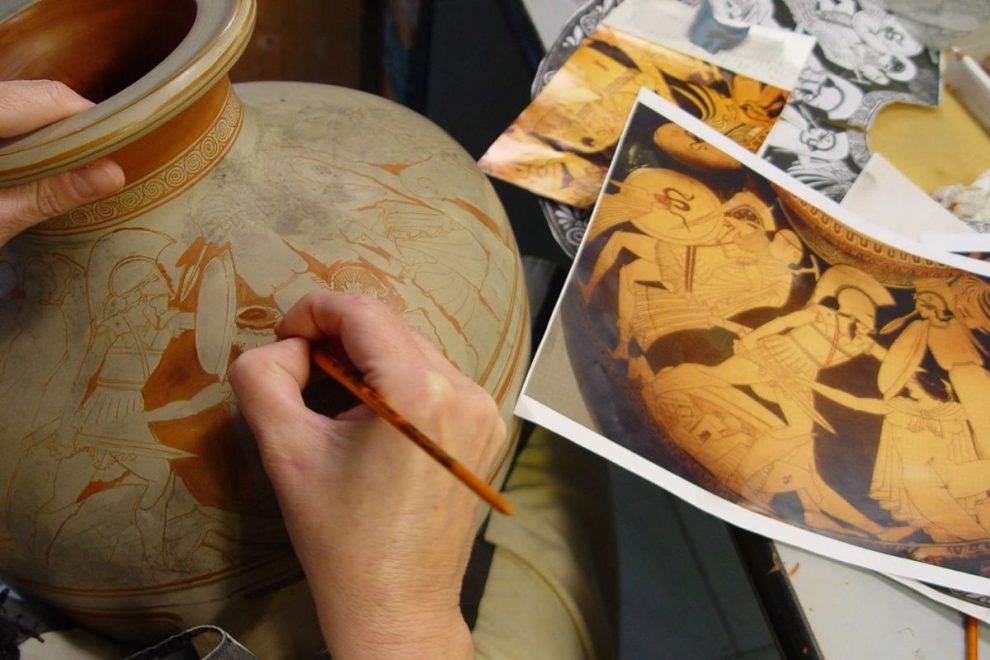
Historical Context of Greek Painted Vases
The pottery of ancient Greece has roots that started in the Bronze Age. The styles we see came from Minoan pottery and the Mycenaean culture. At this early time, the base was set for later changes. Later, during the Geometric period, new styles popped up in different regions of Greece. When ancient Greece moved into the Archaic period, vase painting grew more detailed. This showed a big moment of change and growth in culture.
In the Classical period, people made famous kinds of pottery. The black-figure and red-figure styles became popular. These styles were key developments in the history of Greek painted vases. They used these styles to decorate pots and vases with scenes from Greek literature and their daily lives. It let people see the stories and the way of life in ancient Greece. When the Hellenistic era came, there was another change. West Slope Ware was made. This type had shiny, colorful decoration instead of big painted pictures. This change showed that large scene painting on vases was not as popular as before. Now, we can look at how today’s scholars found and studied these pieces of the past.
Rediscovery and Modern Scholarship
The impact of Greek pots has reached into modern times, but people did not find out their true roots right away. During the Renaissance, many thought these pots were Etruscan vases, not Greek pottery. Later, people like Sir William Hamilton and the art historian Winckelmann stepped in. They helped people see that these were really ancient Greek pottery. Hamilton’s collection of vases, with some still seen at the British Museum, helped show Europe the beauty of ancient Greek vase painting.
In the 19th century, big changes happened. Works by people like Otto Jahn and new archives such as the Cambridge University Press helped experts understand the order of Greek pottery across time. They studied everything from the oldest Geometric vases to famous red-figure pottery pieces. Important digs, that took place on the Athenian Acropolis, helped set the right historical time for many vases.
Now, new tools help people study these vases in detail. Scholars can look at vase inscriptions, fix pots that have broken apart, and even tell which artist made a certain vase. All this careful work makes it clear that Greek vase painting tells us a lot about what life was like back then. The study of Greek pots and pottery helps us know much about ancient Greek people and their world.
Role in Ancient Greek Society
In ancient Greek society, people used finely made pottery for more than just everyday tasks. These items showed the social meanings of that time. Transport vessels were a big part of daily life because they helped move water, wine, and olive oil across the Mediterranean Sea.
Some pieces, like kraters and amphoras, were important during gatherings called symposia. Here, men would sit together and drink diluted wine. Vase painting often showed myth stories, such as the adventures of Zeus, or showed human figures taking part in sports or rituals. These images on Greek vases were not only pretty but also helped explain stories and moments from their world.
During funerals, people also used fine pottery in amazing ways. They put offerings in vessels like lekythoi or set them as grave markers. Some shapes, like the amphora for women’s graves, showed how much these vases meant in Greek culture. Now, let us look more at how their artistic styles changed throughout history.
Detailed Development of Pottery Painting Across Periods
The story of ancient Greek pottery tells us a lot about how the culture changed through time. At first, Minoan pottery (3000–1100 BC) had bright colors and soft, flowing designs. Later, in the Classical period (500–330 BC), people started making black-figure and red-figure pots. This new vase painting style helped artists show more detail. They could paint scenes with people like Achilles in a way that was very clear.
| Period | Notable Style | Key Features |
| Minoan Pottery | Organic motifs | Smooth, natural shapes covered the outside of the pots. |
| Classical Period | Black-figure, red-figure | Showed mythology, daily life, and people’s bodies in detail. |
| Hellenistic Period | West Slope Ware | Fancier, with more colors added to designs. |
By the Hellenistic period, people were making fewer vases. Even so, styles like West Slope Ware brought in extra decorations and bright colors to keep the art going. Now, let’s take a look at what these pots were made of and how ancient Greek artists made them.
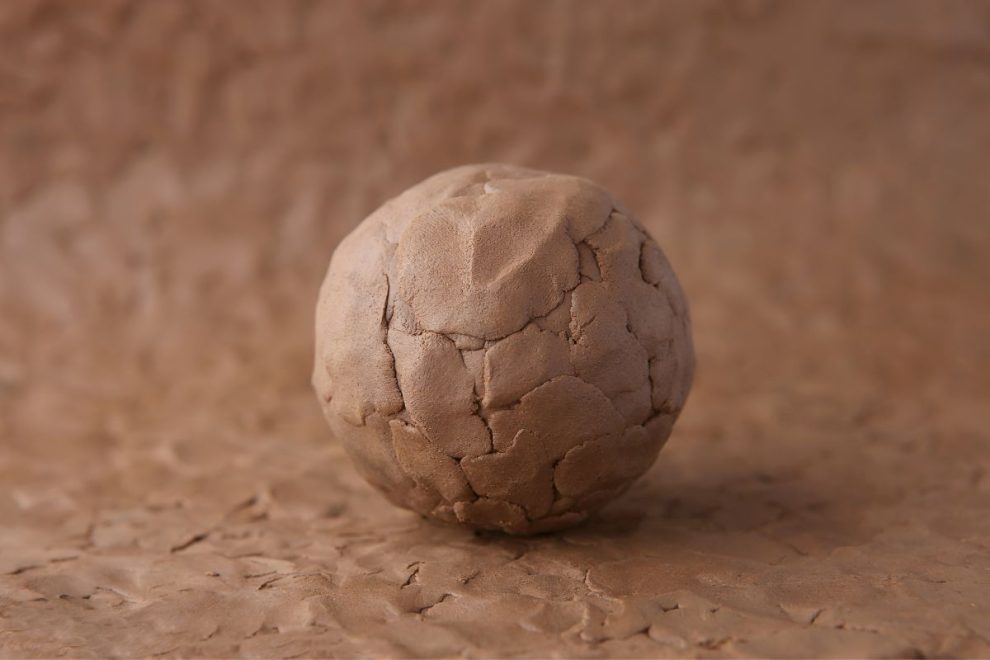
Materials and Production Techniques
The making of ancient Greek pottery started with using clay from places like Attica and Corinth. To make each terracotta vase, people would pick the best clay. Athens was known for making pots with a bright orange color. After shaping the vase, the maker would add designs. These designs were locked in by heating the pot in a kiln and watching the temperature closely. During the firing process, the color of the pottery changed. This happened because the amount of oxygen in the kiln was changed at different times. It made vases show red-and-black colors that were well known. Now, let’s look at the types of clay used by the Greeks to get these looks.
Types of Clay and Their Sources
Attic clay was found near Athens. People liked it most because it was full of iron. When they fired this clay, it turned a bright red-orange color loved by many fans of Greek pottery and ancient Greek pottery. On the other hand, Corinthian clay made for lighter, pale colors. These colors were good if you wanted your pottery to look different or stand out in Greek art. When making Greek pottery, workers cleaned the clay to take out all the stuff it didn’t need. They used a method called levitation. This helped give them smooth clay for fine pottery or rougher clay for things such as storage jars. And, the clay from Rhodes had different minerals in it, too. This made sure each vase or vessel could look new or different. All these clay types let artists meet many different style choices. These clays were the key to what made ancient Greek pottery so loved all over the world. Next, we will see how people made these beautiful vases in the first place.
Steps in Vase Manufacture
The making of a Greek vase used a careful step-by-step process, and more than one person helped to make it.
- The potter would shape the vase, using a wheel. This helped the vase become both even and nice to look at.
- Then, they added designs using a thin clay slip. This slip got the vase ready to be painted.
- Next came the firing process, which had three steps—oxidation, reduction, and reoxidation. These made the designs stay on the vase for good.
- If the vase was big, the pieces were put together and made to look like one whole vase before the firing.
All these detailed steps let the vase be useful but also look great. Now, let’s see the different shapes and how people used these vases.
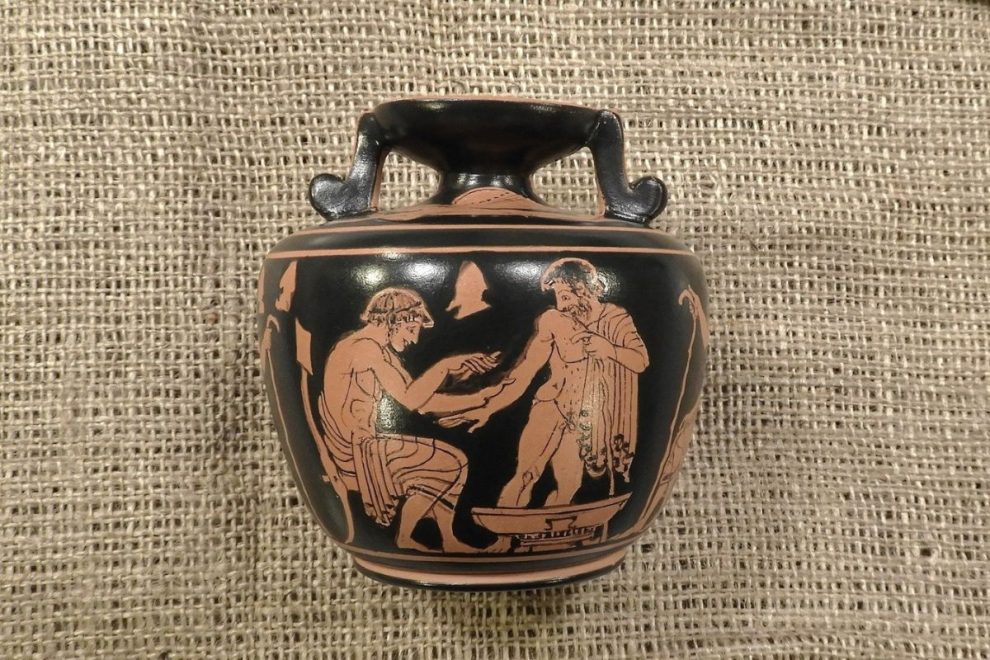
Common Forms and Functions of Greek Vases
Ancient Greek vases came in many shapes and were made for different uses. Each of the Greek vase shapes had its own job. The amphora was made for storage. People used kraters when they wanted to mix wine. There were also cups like the kylix, which were for drinking. These forms matched what people needed in daily life. Greek pottery was more than just useful. Ancient Greek pottery also showed the skill of vase painters. Their detailed designs made the vases not just tools, but art objects people valued. Next, we will talk about some of the main Greek vases in more detail.
Amphora, Krater, Kylix, Kalathos, Aryballos
Among the many types of ancient Greek vases, a few stand out:
- Amphora: This was used by people to keep wine or oil. It has a long body.
- Krater: This was in the middle at parties to mix water and wine together.
- Kylix: This is a wide, shallow cup that people used for drinking while laying down.
- Kalathos: People used this case for storage, mostly while weaving things.
- Aryballos: This is a small, round pot for perfume or oils.
Each of these Greek vases had its own look and use. They show us the skill and ideas of ancient Greek artists. Next, we will look at the ways people used them every day and during rituals.
Everyday and Ritual Uses
In everyday life, ancient Greek pottery like the oinochoe or hydria helped people move water or wine with ease. Some shapes, like the aryballos, were used to keep small personal things, such as perfumes. These types of Greek vases showed that fine pottery was made to be both useful and nice to look at. Ritualistic functions were more than just everyday needs. Funerary vases often showed human figures in mourning, which made people feel closer to both the divine and the mortal worlds. Many of these Greek vases had decoration or inscriptions, highlighting their value in the culture. If for ritual or daily tasks, ancient Greek vases displayed great skill in their making. Let’s take a look at the different painting styles and motifs found on these Greek artefacts.
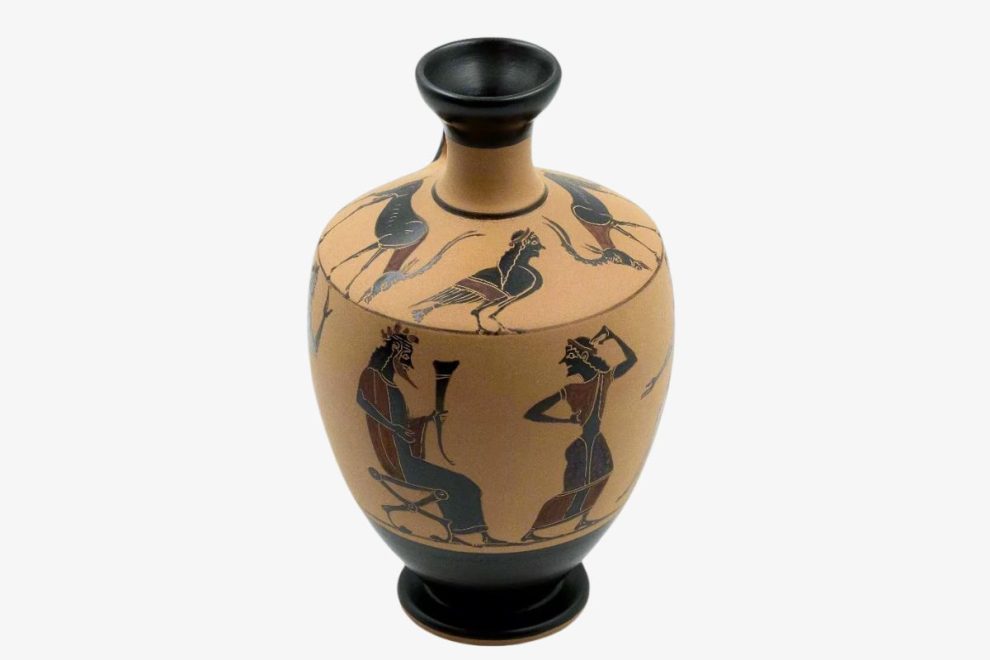
Major Painting Styles and Decorative Motifs
Among Greek vase painting techniques, two styles stand out. These are black-figure and red-figure vase painting. Both styles marked a big shift from simple, geometric designs to detailed mythological scenes. These ancient Greek techniques showed many decorative motifs. The patterns ranged from careful lines cut into the vase to bold, colorful human figures drawn with detail. The stylized patterns on ancient Greek vases showed much of the culture. They made each vase a picture story of ancient Greek art. These vases are a key piece of Greek art. Let’s take a closer look at these well-known ways of painting and decorating Greek vases.
Black-Figure and Red-Figure Techniques
There is a big change seen in ancient Greek vase painting from black-figure to red-figure techniques. Black-figure pottery started in the 7th century BCE. It showed clear scenes cut into the black slip on the vase, which let the natural terracotta show through. On the other hand, the red-figure technique became popular in the 6th century BCE. With this style, artists painted the background black and let the human figures stay red. This let them show more details and movement in the human figures. This new way of painting showed how Greek art and Greek vase painting became more skilled during the classical period. Many ancient Greek vases from that time reveal just how good artists got with pottery using terracotta and these two techniques.
Mythological, Daily Life, and Geometric Designs
Mythological scenes are common in Greek pottery. These scenes often show stories from ancient Greek literature. You will see gods like Zeus and heroes like Achilles on many pieces. This tells us that Greek mythology had a big impact on Greek art. In Greek pottery, there are also many pictures from daily life. You can see people working, having fun, and spending time with family. These scenes let us see what life was like for people in the ancient Greek world. Geometric designs are also a big part of ancient Greek pottery. These patterns use simple shapes and lines that are part of the style of the classical period. Putting together myth, real life, and patterns makes Greek art and pottery very important for understanding Greek culture.
Figurines Associated with Greek Pottery
Figurines made along with Greek pottery give us a close look at ancient Greek art and the things people cared about then. These little figures, often made of terracotta or clay, had more than one use. People used them for religious events, put them at graves, and kept them around the house as decorations. The detailed designs on the figurines show what was popular, like scenes about gods such as Zeus or heroes like Achilles, as well as scenes from daily life. Some of the best examples come from the Classical and Hellenistic periods of ancient Greek history. At that time, pottery makers had new ways to work with clay and terracotta, so the figurines truly showed what their culture was about.
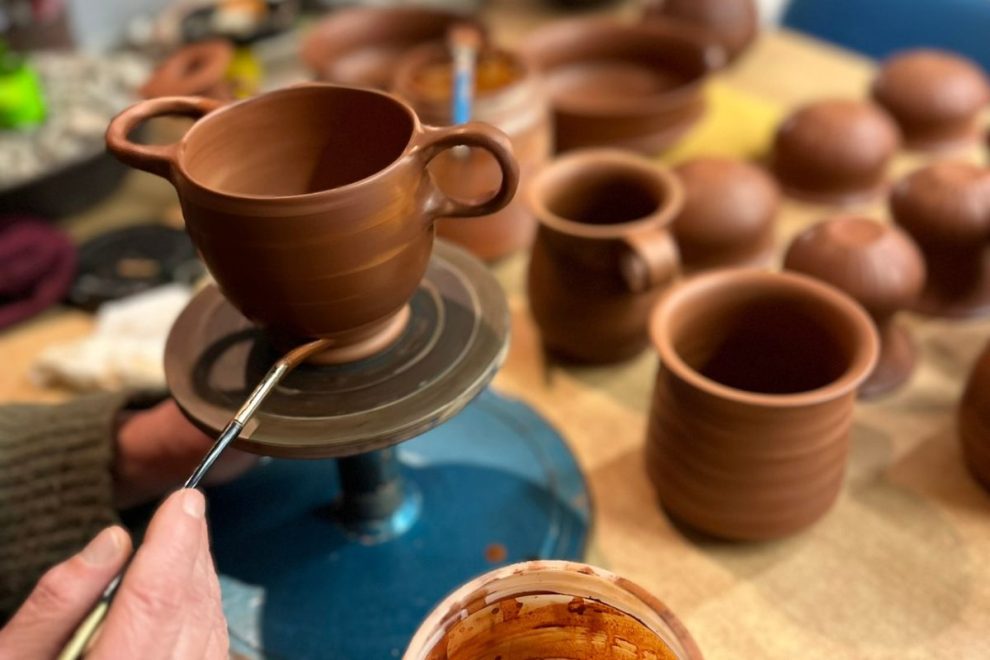
Rediscovery and Modern Scholarship on Greek Vases
Modern scholars have made big steps in learning more about Greek vases and ancient Greek art. They have found out much about the little details found on Greek pottery from the past. Looking at Greek vases has given people new ideas about how the firing process worked back then. They also learn how artists used black-figure and red-figure painting on these ancient Greek vases. The pictures on the pottery show us about their society, not just the art. Groups like Cambridge University Press and other scholars talk about the common types and styles of ancient Greek pottery. Their hard work has helped people know true facts about ancient Greek times, and how Greek art connects to life in those years. Researchers keep looking back at the past, which helps us all get a better idea about Greek culture and history every day.
The trip through Greek painted vases shows us how important they were in ancient Greek art and life. People in ancient Greece made pottery with great care, using styles like black-figure and red-figure. The pictures on these vases tell us about myths and stories from back then. Each vase gives us a look into what life in ancient Greece was like. Today, researchers keep finding out new things about Greek pottery. Their work helps us understand how these vases changed over time. As experts keep uncovering facts about ancient Greek art, the beauty and story of Greek art continue to draw people in. This love for the pottery does not fade; it still inspires people and brings a part of Greece’s past into our present.
